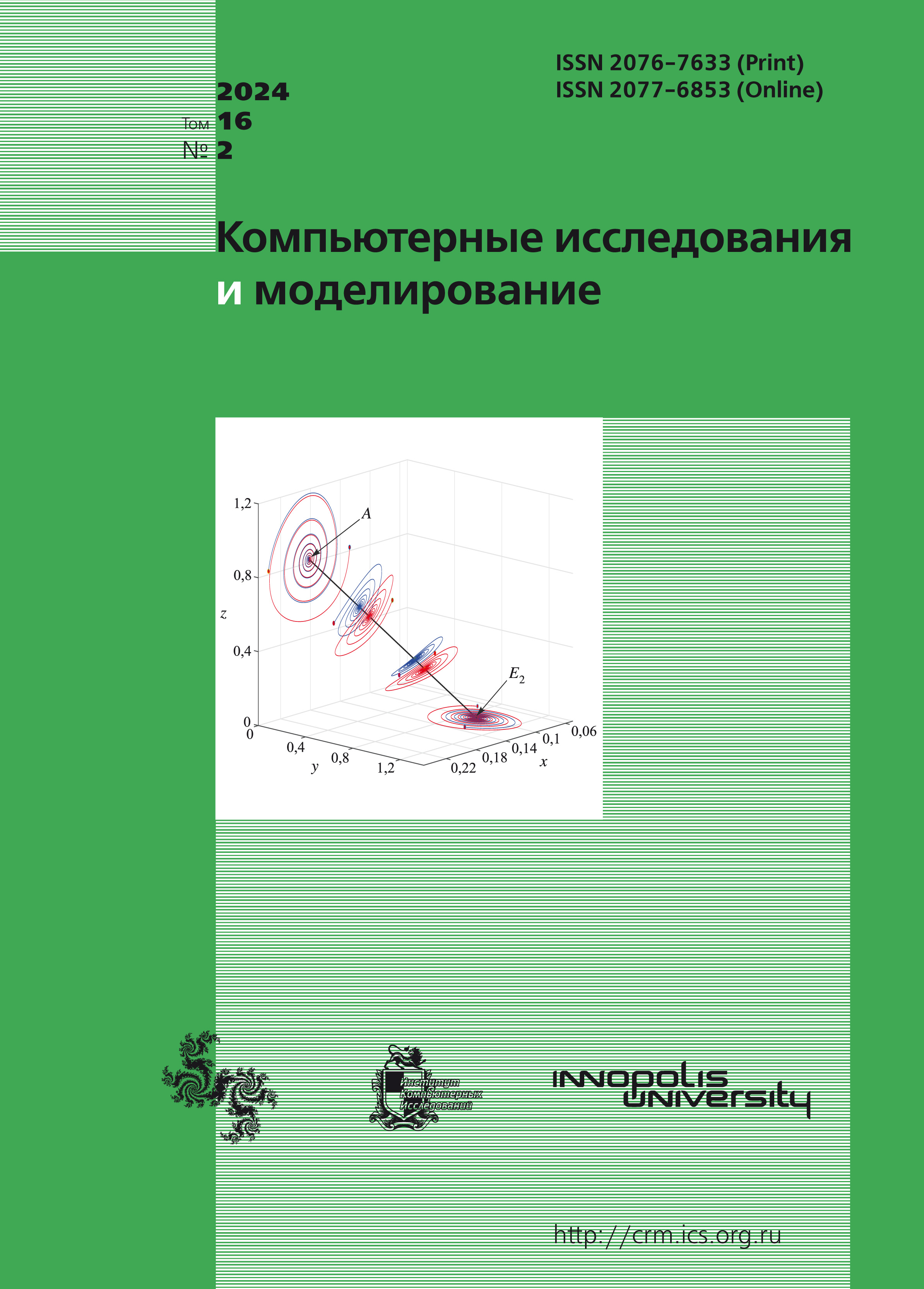Все выпуски
- 2024 Том 16
- 2023 Том 15
- 2022 Том 14
- 2021 Том 13
- 2020 Том 12
- 2019 Том 11
- 2018 Том 10
- 2017 Том 9
- 2016 Том 8
- 2015 Том 7
- 2014 Том 6
- 2013 Том 5
- 2012 Том 4
- 2011 Том 3
- 2010 Том 2
- 2009 Том 1
-
К вопросу выбора структуры многофакторной регрессионной модели на примере анализа факторов выгорания творческих работников
Компьютерные исследования и моделирование, 2021, т. 13, № 1, с. 265-274В статье обсуждается проблема влияния целей исследования на структуру многофакторной модели регрессионного анализа (в частности, на реализацию процедуры снижения размерности модели). Демонстрируется, как приведение спецификации модели множественной регрессии в соответствие целям исследования отражается на выборе методов моделирования. Сравниваются две схемы построения модели: первая не позволяет учесть типологию первичных предикторов и характер их влияния на результативные признаки, вторая схема подразумевает этап предварительного разбиения исходных предикторов на группы (в соответствии с целями исследования). На примере решения задачи анализа причин выгорания творческих работников показана важность этапа качественного анализа и систематизации априори отобранных факторов, который реализуется не вычислительными средствами, а за счет привлечения знаний и опыта специалистов в изучаемой предметной области.
Представленный пример реализации подхода к определению спецификации регрессионной модели сочетает формализованные математико-статистические процедуры и предшествующий им этап классификации первичных факторов. Наличие указанного этапа позволяет объяснить схему управляющих (корректирующих) воздействий (смягчение стиля руководства и усиление одобрения приводят к снижению проявлений тревожности и стресса, что, в свою очередь, снижает степень выраженности эмоционального истощения участников коллектива). Предварительная классификация также позволяет избежать комбинирования в одной главной компоненте управляемых и неуправляемых, регулирующих и управляемых признаков-факторов, которое могло бы ухудшить интерпретируемость синтезированных предикторов.
На примере конкретной задачи показано, что отбор факторов-регрессоров — это процесс, требующий индивидуального решения. В рассмотренном случае были последовательно использованы: систематизация признаков, корреляционный анализ, метод главных компонент, регрессионный анализ. Первые три метода позволили существенно сократить размерность задачи, что не повлияло на достижение цели, для которой эта задача была поставлена: были показаны существенные меры управляющего воздействия на коллектив, позволяющие снизить степень эмоционального выгорания его участников.
Ключевые слова: многофакторный статистический анализ, систематизация предикторов, методы снижения размерности, модель анализа профессионального выгорания.
On the question of choosing the structure of a multivariate regression model on the example of the analysis of burnout factors of artists
Computer Research and Modeling, 2021, v. 13, no. 1, pp. 265-274The article discusses the problem of the influence of the research goals on the structure of the multivariate model of regression analysis (in particular, on the implementation of the procedure for reducing the dimension of the model). It is shown how bringing the specification of the multiple regression model in line with the research objectives affects the choice of modeling methods. Two schemes for constructing a model are compared: the first does not allow taking into account the typology of primary predictors and the nature of their influence on the performance characteristics, the second scheme implies a stage of preliminary division of the initial predictors into groups, in accordance with the objectives of the study. Using the example of solving the problem of analyzing the causes of burnout of creative workers, the importance of the stage of qualitative analysis and systematization of a priori selected factors is shown, which is implemented not by computing means, but by attracting the knowledge and experience of specialists in the studied subject area. The presented example of the implementation of the approach to determining the specification of the regression model combines formalized mathematical and statistical procedures and the preceding stage of the classification of primary factors. The presence of this stage makes it possible to explain the scheme of managing (corrective) actions (softening the leadership style and increasing approval lead to a decrease in the manifestations of anxiety and stress, which, in turn, reduces the severity of the emotional exhaustion of the team members). Preclassification also allows avoiding the combination in one main component of controlled and uncontrolled, regulatory and controlled feature factors, which could worsen the interpretability of the synthesized predictors. On the example of a specific problem, it is shown that the selection of factors-regressors is a process that requires an individual solution. In the case under consideration, the following were consistently used: systematization of features, correlation analysis, principal component analysis, regression analysis. The first three methods made it possible to significantly reduce the dimension of the problem, which did not affect the achievement of the goal for which this task was posed: significant measures of controlling influence on the team were shown. allowing to reduce the degree of emotional burnout of its participants.
Журнал индексируется в Scopus
Полнотекстовая версия журнала доступна также на сайте научной электронной библиотеки eLIBRARY.RU
Журнал входит в систему Российского индекса научного цитирования.
Журнал включен в базу данных Russian Science Citation Index (RSCI) на платформе Web of Science
Международная Междисциплинарная Конференция "Математика. Компьютер. Образование"






